When most people think of sheep, they picture white fluffy animals.
If you pass a herd of sheep, they are almost all white-colored most of the time.
Black sheep are known mostly as a rarity.
Most sheep owners did not wish to breed black sheep.
This is because black wool was impossible to dye and harder to clean.
Most everyone prefers white wool.
However, some sheep breeds are born with black fleece.
Let’s dive into these unique and intriguing breeds.
Table of Contents
ToggleBlack Katahdin
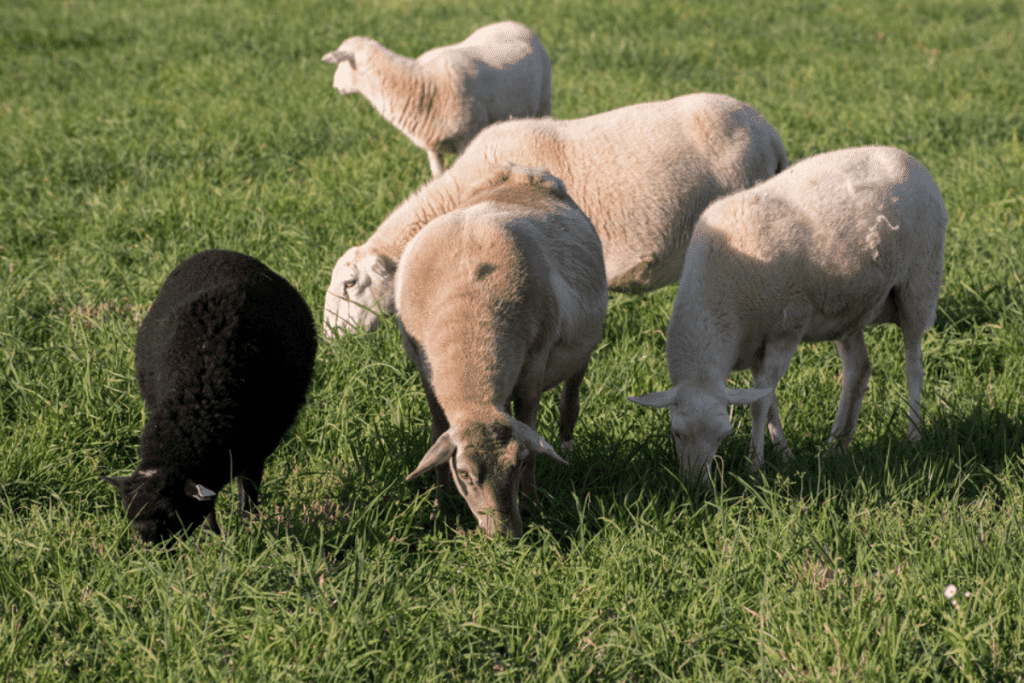
Black Katahdin sheep are a unique breed.
They are primarily used for mutton and meat production.
They are a great and efficient breed for this purpose.
The ancestors of the Black Katahdin breed were brought to the United States to attempt to create a breed of sheep without fleece.
Their reasoning was to remove the expenses associated with shearing and grooming sheep.
Related: How much does sheep shearing cost?
The result is the Black Katahdin sheep, solid black and has little to no fleece growth.
Katahdins range in colors, but most have jet black bodies, hooves, faces, and ears.
This breed of sheep is primarily used for meat production.
They tend to have a lower overhead than others as farmers do not need to shear their fleece routinely.
However, this breed is known to take a while to reach maturity and grow enough meat to be sent to slaughter.
This slow-growing breed is considered to have excellent bone and muscle structure.
Katahdin meat goes for a higher price than other mutton in some markets.
The average male Katahdin, or ram, reaches about 250 pounds while the females, or ewes, reach about 150 pounds.
Hebridean Sheep
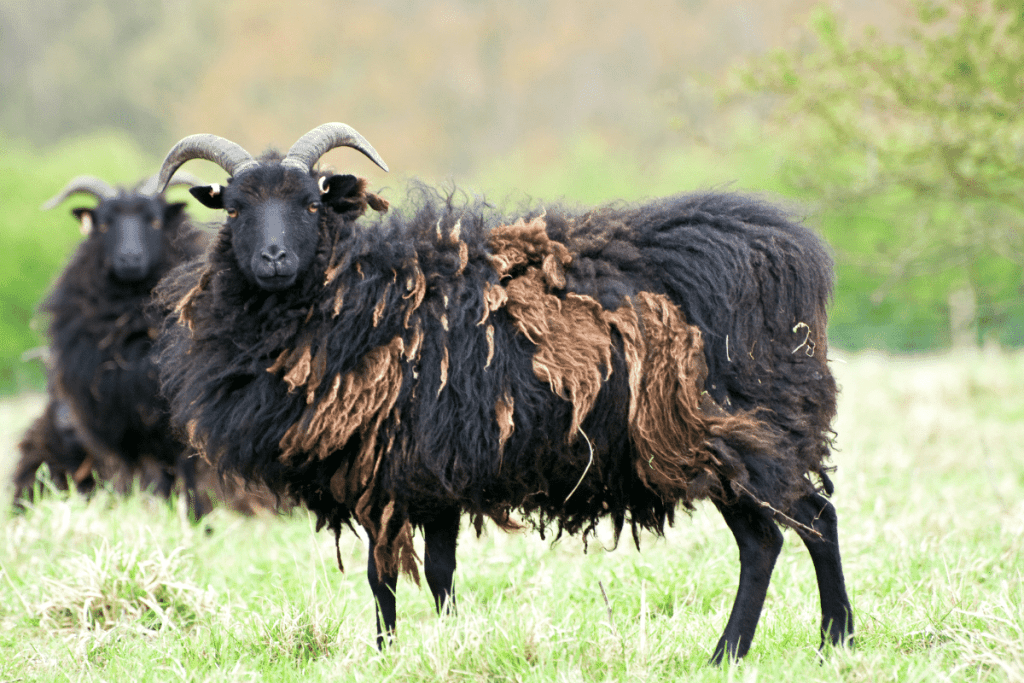
The Hebridean Sheep is an easily distinguishable breed.
Their jet-black fur and ornate horns make them easy to pick from a herd.
The Hebridean Sheep breed originated in the western islands of Scotland.
Most adult Hebridean sheep reach about 150 pounds at maturity, with rams weighing slightly more than their ewe counterparts.
The Hebridean rams are unique with their four separate horns and jet black fur.
The Hebridean sheep breed easily and are known to produce two or even three offspring at a time.
They ewes usually have a very easy time raising their young.
The Hebridean Sheep is not a common breed. Not too many farmers keep them.
Those who keep this particular breed tend to do so for ornamental purposes.
However, Hebridean sheep also produce wool and meat well.
It is recommended to shear the Hebridean sheep annually.
During this yearly shearing, aim to cut about 5 lbs of their jet black wool off.
Even though they are predominately kept for ornamental reasons, the ewes can produce enough milk to support their young and small family.
Black Hawaiian
The Black Hawaiian breed of sheep is a handsome all-black breed with beautifully curved horns.
The breed is not very commonly raised on smaller mutton farms.
Most of them are raised on hunting ranches as a trophy breed.
While they are not predominantly raised for meat, their mutton is said to have excellent quality.
Many describe it as sweet and savory.
The meat of the Black Hawaiian sheep breed is also very lean, which adds to the quality of the mutton.
The Black Hawaiian sheep breed is medium-sized.
Ewes usually reach about 150 pounds while rams reach 200 pounds or more.
Another unique thing about this breed, outside of their color and Corsican-style horns, is their hair.
Black Hawaiians have an undercoat that they shed annually.
Their hair does not require shearing but also is not suitable for wool.
Due to their natural shedding, this breed tends to do well in warmer climates where others may experience overheating.
Related: Best sheep breeds for meat
Alpines Steinschaf
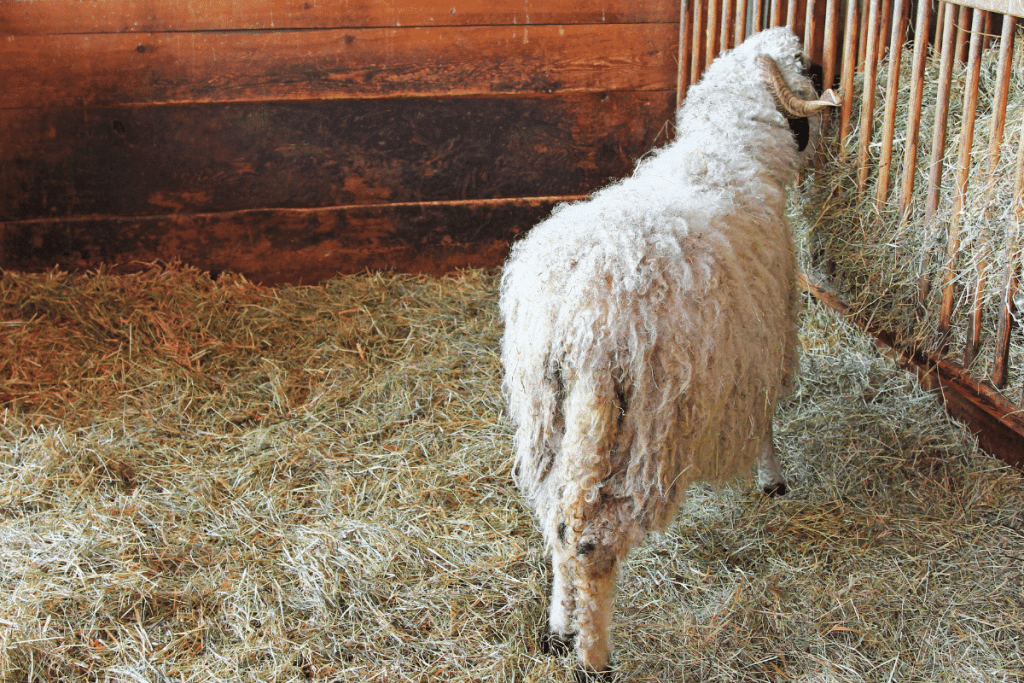
The Alpines Steinschaf breed of sheep is native to the Alps in Austria and Germany.
They are a smaller breed of sheep.
Ewes tend to only reach about 100 pounds on average, while rams top out at about 150 pounds.
The Alpines Steinschaf breed is primarily raised for meat and wool.
Farmers also keep them to control grass growth as they are well equipped to gnaw down the grass to an appropriate height.
Alpines Steinschaf sheep come in various colors, including jet black.
They are a unique breed and great for those looking for a smaller breed of all-black sheep for their herd.
Some Alpines Steinschaf sheep are horned while others are poled.
The variations possible within this breed make them quite versatile, depending on what exactly the farmer may be looking for.
Black Welsh Mountain Sheep
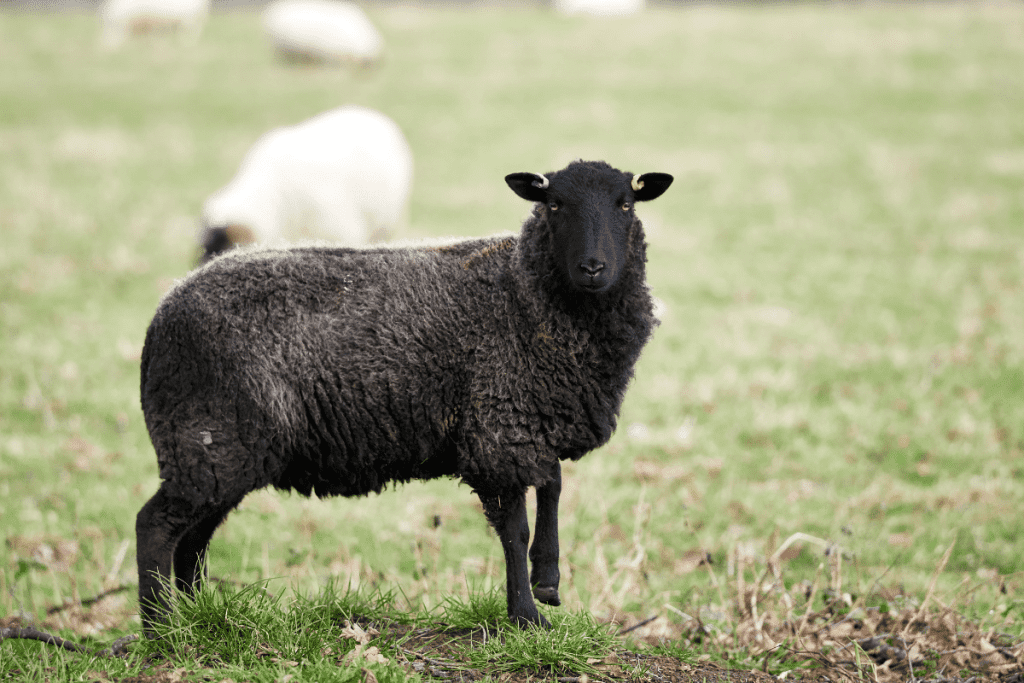
Black Welsh Mountain Sheep is a jet black breed revered for its quality fur.
This breed has been kept for its meat and wool production since the Middle Ages.
You’ll still find large herds of this breed throughout the United States, the United Kingdom, and Ireland.
As one of the smaller-sized breeds on this list, the Black Welsh Mountain Sheep makes an excellent breed for those new to keeping sheep.
Rams top out at about 150 pounds, making them easy to handle even for beginner sheep owners.
On top of their quality wool and meat, the Black Welsh Mountain Sheep breed is considered very independent.
They are naturally resistant to many diseases and are considered very hardy.
Most Black Welsh Mountain ewes have no issues lambing and require little intervention with their grazing.
They are very self-reliant and should cause no worries when left in the pasture to graze.
They are celebrated for their ability to drastically improve the soil quality and overall health of pastures.
The meat and wool of the Black Mountain Welsh are high quality and very desirable.
The meat is known as a delicacy in many places.
This means farmers tend to turn more of a profit by raising this particular breed for mutton production.
In addition to their meat, their jet black fleece has an excellent reputation.
It is considered very high quality by weavers and hand spinners due to its density and short fibers.
Arapawa Island Sheep
The Arapawa Island sheep are very rare and considered an endangered species.
Their exact origin remains debated, but many believe they arrived in New Zealand due to a sunken whaling ship.
The Arapawa Island Sheep are primarily raised to preserve the species.
Some also keep this sheep breed for ornamental purposes.
For a small-scale farm, the Arapawa Island Sheep would likely satisfy a small family’s wool and meat needs.
Even though the Arapawa Island Sheep are very small in stature, they are considered to be difficult to handle.
This is usually attributed to their feral roots.
Rams reach a maximum weight of roughly 120 pounds, while ewes tend to weigh about 10-20 pounds less than this.
Despite their small size, the Arapawa Island Sheep often has impressive horns reaching widths of 3’ feet.
Rams tend to have these impressive horns while ewes are usually polled.
Balwen Welsh Mountain
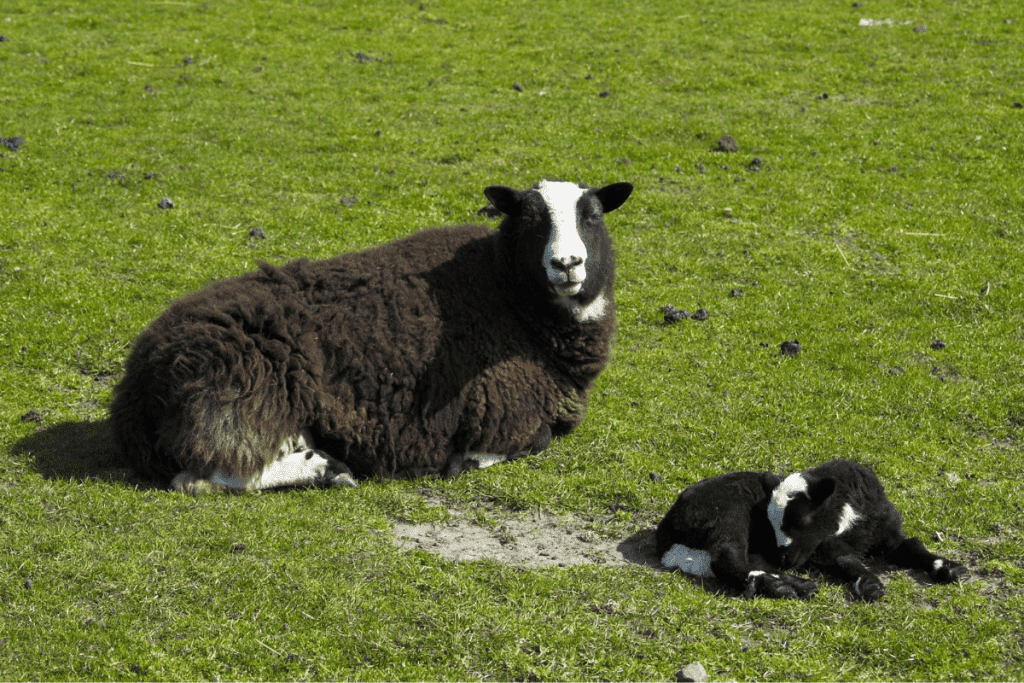
The Balwen Welsh Mountain sheep are native to the Tywi Valley in Wales.
They are small to medium-sized animals with rams reaching weights of up to 130 pounds.
Due to their small size and compliant disposition, the Balwen Welsh Mountain breed of sheep is considered very easy to rear.
They are primarily raised for meat.
The Balwen Welsh Mountain sheep is almost entirely jet black with some white markings on its legs and its face.
The breed is considered to be extremely hardy.
For this reason, it has been called the sheep of all seasons.
Having a hardy breed is especially important if you live in a place with harsh extremes in temperatures.
Some breeds do best in colder climates, while others are more well-suited for warmer temperatures.
Finding a breed like the Balwen Welsh Mountain sheep is great for those living in tougher climates.
Need some help naming your sheep? Check out our massive list of sheep names.
German Grey Heath
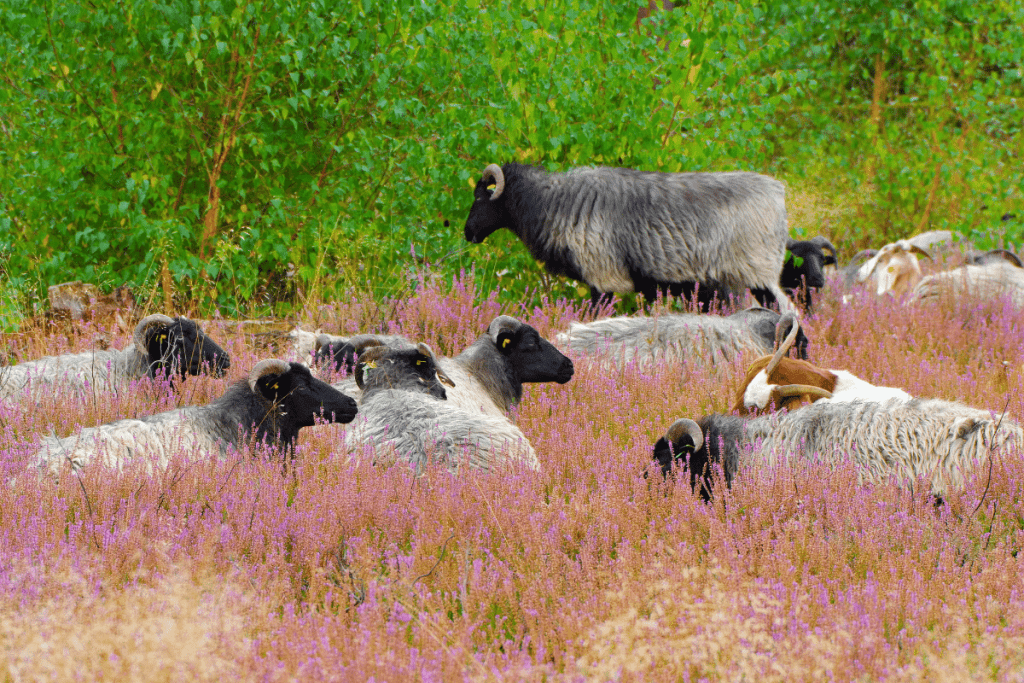
The German Grey Heath breed is a regal-looking sheep descended from the Mouflon breed.
It is believed to have originated in Germany, specifically the Luneberger Heide region.
In some places, this breed is better known by its other name, Heidschnucke.
German Grey Heath sheep are primarily bred for meat and wool production.
They are a medium-sized breed with rams averaging 175 pounds and ewes clocking in at 100 pounds.
One unique fact about the German Grey Heath is their dual-coated fleece.
This allows them to produce up to 8.8 pounds of beautiful wool per shearing.
German Grey Heath sheep are born with jet black fleece.
As they age, this jet black fleece turns gray and silver.
Their bib, face, and legs tend to keep their jet black color despite this color change.
Breeds Of Sheep With Black Faces
While solid jet black breeds of sheep are rare, there are numerous sheep breeds with black features.
You’ve likely seen images of sheep with black faces, ears, and hooves, as this is a common coloring pattern in popular breeds of sheep.
The allure of the jet black wool and fleece is intriguing.
Its rarity makes it very special.
However, white sheep wool and fleece tend to be easier to work with.
Many people find the white fleece to be significantly easier to clean.
Also, white wool takes nearly any color of dye, making it more desirable to manufacturers.
On the other hand, black fleece and wool do not take to being dyed as their natural pigment are too dark.
Let’s look at some black-faced sheep breeds.
Suffolk
The Suffolk sheep is one of the most common sheep breeds of black-faced sheep you see in pastures.
The British sheep breed dates back to the 18th century.
The Suffolk sheep are celebrated for their good nature.
They are also known for being very alert, stamina, and quality.
Primarily, the Suffolk breed of domestic sheep is kept for meat production.
Some people find their wool and milk to not be of the best quality, but they are still adequate for family farms.
Hampshire
The Hampshire is a large breed of black-faced sheep.
The breed originated in Hampshire, England, in the 1800s.
Modern Hampshire sheep are very large and blocky.
Some refer to them as the oxen of the sheep world.
The modern Hampshire sheep results from crossbreeding the Southdown rams and old Hampshire ewes.
Rams reach 275 pounds, making them an excellent breed of meat sheep.
Related: When is a sheep too old to eat?
They are also kept for wool production as they tend to produce a lot of it.
Romanov
The Romanov sheep is a Russian breed of black-faced sheep.
They are unique in the way they change colors as they age.
The lambs are born black but lighten up as they age.
The result often shows unique black markings on the face, ears, and hooves.
Romanov sheep breed is most well known for its ability to produce offspring.
The sheep of this breed reach sexual maturity at just 3 months of age, and it is not uncommon for ewes to have as many as four lambs at a time.
They are commonly kept in many different countries for meat and wool production.
Scottish Blackface
The Scottish Blackface breed is a hardy type of black-faced sheep.
They are celebrated for their ability to adapt to a wide range of harsh conditions.
They are primarily kept for wool production, and many consider this breed to be the backbone of the Scottish wool industry.
Nearly 40% of the wool production in Scotland is from the Scottish Blackface breed.
This breed is considered very versatile and hardy. In addition to their wool, they are also considered excellent milk producers.
How useful was this post?
Click on a star to rate it!
We are sorry that this post was not useful for you!
Let us improve this post!
Tell us how we can improve this post?
